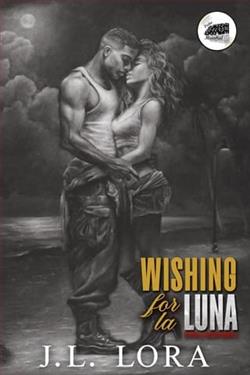Page 8 of A Son of the Circus
There was, however, much speculation about how Inspector Dhar could conceivably have become a member of the Duckworth Club. Movie stars weren’t welcome there, either. And given the 22-year waiting list and the fact that the actor became a member when he was only 26, Dhar must have applied for membership when he was four! Or someone had applied for him. Furthermore, it had not been sufficiently demonstrated to many Duckworthians that Inspector Dhar had distinguished himself in “community leadership”; some members pointed to his efforts for the Hospital for Crippled Children, but others argued that Inspector Dhar’s movies were destructive to all of Bombay. Quite understandably, there was no suppressing the rumors or the complaints that circulated through the old club on this subject.
Dr. Daruwalla Is Stricken with Self-Doubt
There was also no suppressing the exciting news about the dead golfer in the bougainvillea near the ninth green. True to his fictional character, Inspector Dhar himself had located the body. Doubtless the press would expect Dhar to solve the crime. It didn’t appear there had been a crime, although there was talk among the Duckworthians that Mr. Lal’s excesses on the golf course were of a criminal nature, and surely his exertions in the wrecked bougainvillea hadn’t served the old gentleman well. The vultures had spoiled a clear impression, but it seemed that Mr. Lal had been the victim of his own chip shot. His lifelong opponent, Mr. Bannerjee, told Dr. Daruwalla that he felt as if he’d murdered his friend.
“He always fell apart at the ninth hole!” Mr. Bannerjee exclaimed. “I never should have teased him about it!”
Dr. Daruwalla was thinking that he’d often teased Mr. Lal along similar lines; it had been irresistible to tease Mr. Lal in regard to the zeal with which he played a game for which he manifested minimal talent. But now that he appeared to have died at the game, Mr. Lal’s enthusiasm for golf seemed less funny than before.
Farrokh found himself sensing some faint analogy between his creation of Inspector Dhar and Mr. Lal’s golf game, and this unwanted connection came to him as the result of a sudden, unpleasant odor. It wasn’t as strong an impression as the stench of a man defecating at close quarters, but instead the smell was at once more familiar and more removed—sun-rotted garbage, perhaps, or clogged drains. Farrokh thought of potted flowers and human urine.
Far-fetched or not, the nature of the comparison between Mr. Lal’s lethal golf habit and Dr. Daruwalla’s screenwriting was simply this: the Inspector Dhar movies were judged to be of no artistic merit whatsoever, but the labors that the doctor performed to write these screenplays were intense; the nature of Inspector Dhar’s character was crude to most viewers, and outrageously offensive to many, but the doctor had created Dhar out of the purest love; and Farrokh’s fragile self-esteem rested as much on his sense of himself as a closet writer as it did on his established reputation as a surgeon, even if he was only a screenwriter and, worse, even though he was perceived to be such a shameless hack—such a whore for the money—that he wouldn’t even lend his name to his creations. Understandably, since the actor who played Inspector Dhar had himself become (in the public eye) the very character he portrayed, the authorship of the screenplays was ascribed to Dhar. What gave Farrokh so much pleasure was the actual writing of the screenplays themselves; yet, despite his own enjoyment of the craft, the results were ridiculed and hated.
Recently, in the light of certain death threats that Inspector Dhar had received, Dr. Daruwalla had even considered retiring; the doctor had meant to sound out the actor in regard to this notion. If I stop, Farrokh wondered, what will Dhar do? If I stop, what will I do? he’d also wondered, for he’d long suspected that Dhar wouldn’t be opposed to the idea of getting out of the business of being Dhar—especially now. To suffer the verbal abuse of The Times of India was one thing; death threats were something altogether different.
And now this unlikely association to Mr. Lal’s golf game, this unveiled reek of sun-rotted garbage, this ancient smell from a clogged drain—or had someone been peeing in the bougainvillea? These thoughts were most unwelcome. Dr. Daruwalla suddenly saw himself as the poor, doomed Mr. Lal; he thought he was as bad but as compulsive a writer as Mr. Lal had been a golfer. For example, he’d not only written another screenplay; they’d already finished the final cut of the picture. Coincidentally, the new movie would be released shortly before or after the arrival in Bombay of Dhar’s twin. Dhar himself was just hanging around—he was under contract for a very limited number of interviews and photo opportunities to publicize the new release. (This forced intimacy with the film press could never be limited enough to suit Dhar.) Also, there was every reason to believe that the new film might make as much trouble as the last. And so the time to stop is now, thought Dr. Daruwalla, before I begin another one!
But how could he stop? It was something he loved. And how could he hope to improve? Farrokh was doing the best that he could; like poor Mr. Lal, he was hopelessly returning to the ninth green. Each time, the flowers would fly but the golf ball would remain more or less unresponsive; each time, he would be knee-deep in the blighted bougainvillea, slashing wildly at the little white ball. Then, one day, the vultures would be overhead and descending.
There was just one choice: either hit the ball and not the flowers, or stop the game. Dr. Daruwalla understood this, yet he couldn’t decide—no more than he could bring himself to tell Inspector Dhar the upsetting news. After all, the doctor thought, how can I hope to be any better than my proven abilities? And how can I stop it, when “it” is merely what I do?
It soothed him to think of the circus. Like a child who’s proud to recite the names of Santa’s reindeer or the Seven Dwarfs, Farrokh tested himself by remembering the names of the Great Royal’s lions: Ram, Raja, Wazir, Mother, Diamond, Shanker, Crown, Max, Hondo, Highness, Lillie Mol, Leo and Tex. And then there were the cubs: Sita, Gita, Julie, Devi, Bheem and Lucy. The lions were most dangerous between their first and second feedings of meat. The meat made their paws slippery; while they paced in their cages, in expectation of their second serving, they often slipped and fell down, or they slid sideways into the bars. After their second feeding, they calmed down and licked the grease off their paws. With lions, you could count on certain things. They were always themselves. Lions didn’t try to be what they couldn’t be, the way Dr. Daruwalla kept trying to be a writer—the way I keep trying to be an Indian! he thought.
And in 15 years, he’d not found a genetic marker for achondroplastic dwarfism, nor had anyone encouraged him to look. But he kept trying. The doctor’s dwarf-blood project wasn’t dead; he wouldn’t let it die—not yet.
Because an Elephant Stepped on a Seesaw
By the time Dr. Daruwalla was in his late fifties, the exuberant details of the doctor’s conversion to Christianity were entirely absent from his conversation; it was as if he were slowly becoming unconverted. But 15 years ago—as the doctor drove to the circus grounds at Cross Maidan to assess what damage had been done to the dwarf—Farrokh’s faith was still new enough that he’d already imparted the miraculous particulars of his belief to Vinod. If the dwarf was truly dying, the doctor was at least slightly comforted by his memory of their religious discussion—for Vinod was a deeply religious man. In the coming years, Farrokh’s faith would comfort him less deeply, and he would one day flee from any religious discourse with Vinod. Over time, the dwarf would strike the doctor as a giant zealot.
But while the doctor was en route to discover whatever disaster had befallen the dwarf at the Great Blue Nile, he found it heartening to dwell on the dwarf’s expressed excitement over the parallels between Vinod’s version of Hinduism and Dr. Daruwalla’s Christianity.
“We are having a kind of Trinity, too!” the dwarf had exclaimed.
“Brahma, Shiva, Vishnu—is that what you mean?” the doctor asked.
“All creation is being in the hands of three gods,” Vinod said. “First is Brahma, the God of Creation—there is only one temple in all of India to him! Second is Vishnu, the God of Preservation or Existence. And third is Shiva, the God of Change.”
“Change?” Farrokh asked. “I thought Shiva was the Destroyer—the God of Destruction.”
“Why is everyone saying this?” the dwarf exclaimed. “All creation is being cyclic—there is no finality. I am liking it better to think of Shiva as the God of Change. Sometimes death is change, too.”
“I see,” Dr. Daruwalla replied. “That’s a positive way of looking at it.”
“This is our Trinity,” the dwarf went on. “Creation, Preservation, Change.”
“I guess I don’t understand the female forms,” Farrokh boldly admitted.
“The power of the gods is being represented by the females,” Vinod explained. “Durga is the female form of Shiva—she is the Goddess of Death and Destruction.”
“But you just said Shiva was the God of Change,” the doctor interjected.
“His female form, Durga, is the Goddess of Death and Destruction,” the dwarf repeated.
“I see,” Dr. Daruwalla responded; it seemed best to say so.
“Durga is looking after me—I am praying to her,” Vinod added.
“The Goddess of Death and Destruction is looking after you?” Farrokh inquired.















